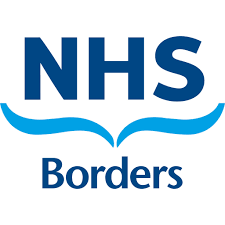Bronchiolitis management

A diagnosis of acute bronchiolitis is a clinical one based on typical history and findings on physical examination. The illness is associated with coryza, cough, tachypnoea, wheeze, use of accessory muscles, and poor feeding.
“A diagnosis of acute bronchiolitis should be considered in an infant with nasal discharge and a
wheezy cough, in the presence of fine inspiratory crackles and/or high pitched expiratory wheeze.
Apnoea may be a presenting feature.” Sign 91 (2006)
At risk group: preterm, cardiac, chronic lung disease.
Breast feeding reduces the risk of RSV-related hospitalisation.
Parental smoking is associated with increased risk of RSV-related hospitalisation.
Assessment
Any of the following indications should prompt hospital referral/acute paediatric assessment in an infant with acute of suspected bronchiolitis:
- poor feeding (<50% of usual fluid intake in preceding 24 hours
- lethargy
- history of apnoea
- respiratory rate >70/min
- presence of nasal flaring and /or grunting
- severe chest wall recession
- cyanosis
- oxygen saturation ≤ 94%
- uncertainty regarding diagnosis.
Clinicians assessing the need to refer (or review in primary care) should also take account of
whether the illness is at an early (and perhaps worsening) stage, or at a later (improving) stage.
The threshold for hospital referral should be lowered in patients with significant comorbidities,
those less than 3 months of age or infants born at less than 35 weeks gestation. Geographical
factors/transport difficulties and social factors should also be taken into consideration.
Investigations
- Pulse oximetery should be preformed in every child who attends hospital with acute
bronchiolitis. - Chest x-ray should not be preformed in infants with typical acute bronchiolitis
- Unless adequate isolation facilities are available, rapid testing for RSV is recommended in
infants who require admission to hospital with acute bronchiolitis, in order to guide cohort
arrangements. - Bacteriological testing of blood and urine is not indicated in infants. Bacteriological testing
of urine should be considered in febrile infants less than 60 days old. - Full blood count is not indicated in assessment and management.
- Measurement of urea and electrolytes is not indicated in the routine assessment and
management. - Blood gas analysis is not usually indicated. It may have a role in the assessment of infants
with severe respiratory distress or who are tiring and may be entering respiratory failure.
Treatments
- Infants with oxygen satuation levels ≤ 92% or who have severe respiratory distress or
cyanosis should receive supplemental oxygen by nasal cannulae or facemask. - Nasogastric feeding should be considered in infants with acute Bronchiolitis who cannot
maintain oral intake or hydration. - Nasal suction should be used to clear secretions in infants hospitalised, who exhibit
respiratory distress due to nasal blockage.
The following treatments are not recommended:
- Inhaled β2 agonist bronchodilators
- Nebulised ipratropium
- Nebulised epinephrine
- Nebulised ribavirin
- Inhaled corticosteroids
- Oral systemic steroids
- Chest physiotherapy
- Antibiotic therapy.
Symptom duration and hospital discharge
Parents and carers should be informed that, from the onset of acute bronchiolitis, around half of
infants without comorbidity are asymptomatic by two weeks but that a small proportion will still
have symptoms after four weeks.
Hospital discharge
Infants who have required supplemental oxygen therapy should have oxygen saturation monitoring for a period of 8-12 hours after therapy is discontinued (including a period of sleep) to ensure
clinical stability before being considered for discharge.
Infants with oxygen saturations > 94% in room air may be considered for discharge.
Hospitalised infants should not be discharged until they can maintain an adequate daily oral intake (>75% of usual intake).
Limiting disease transmission
RSV:
- Highly infectious
- Transmitted through contagious secretions or via environmental surfaces (skin, cloth & other
objects) - Respiratory droplets produced by coughing or sneezing can spread up to 2 metres
- Enters body via mucous membranes of the eyes, nose or mouth
- Can survive 6-12 hours on environmental surfaces
- May be transferred on the hands to the eyes or nose
- Is destroyed by soap and water/alcohol gel
- May be shed for up to 3 weeks and longer if a child is immuno-compromised.
Bronchiolitis Management Plan
| Mild 1. SaO2>94% in air 2. Feeding orally 3. Parents able to cope |
Manage at home Advise parents of expected course of illness and when to contact ward and/or return – give bronchiolitis information sheet May require smaller frequent feeds |
| Moderate 1. SaO2≤92% in air 2. Unable to take oral feed 3. At risk group |
Admit to isolation/cohort area Secretions for RSV status Administer O2 to maintain saturations >94% Small frequent feeds initially – oral/naso gastric tube. Regular naso-pharyngeal suction If respiratory score >8 Use headbox if requiring more than 2 l/min of nasal cannula oxygen |
| Severe – Any one present 1. Apnoea 2. Increasing O2 requirements >40% 3. Signs of lethargy, sweaty, irritable |
Capillary blood gas, U&E Chest x-ray Discuss with Consultant on call Ensure nursed in high observation, one-to-one nursing Consider transfer to regional PICU, may require ventilation |
